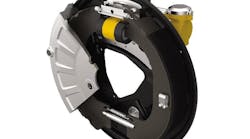It seems nothing can escape the Internet of Things (IoT). We already see that sensors and data collection are becoming a natural part of our work and consumer environment. In the world of fluid power, IoT is impacting both the hydraulic and pneumatic sectors, especially in terms of direct monitoring and control via cloud analytics and smart devices. IoT features are being directly integrated into hoses, fittings, control valves, and pumps.
A recent report from BCC Research stated that the global market for instrumentation sensors used in fluid control would reach $16.2 billion by 2021, dramatically up from the $11.8 billion in 2016. Stationary applications represent the market with the largest growth potential, with forecasts of up to $15.9 billion by 2021. Mobile applications could see a major ramp-up in the fluid power world, too. Smartphone and tablet apps are expected to climb from a $243 million market in 2016 to $308.6 billion in 2021.
All aspects of the engineering industry have felt the impact of the Internet of Things. This includes the fluid power arena, as it offers the ability to monitor and control fluid valves, hoses, and pumps.
According to the report, in 2016, flow transmitters for fluid control in the process industries had a maximum share of 40.9%. Next on the list were level transmitters (25.5%), pressure transmitters (17.5%), and temperature transmitters (16.1). In 2021, flow transmitters are still expected to hold maximum share at 41%, followed by increases in level transmitters (25.3%), pressure transmitters (17%), and temperature transmitters (16.6%). Let’s examine three examples of how leading companies in fluid power are integrating monitoring and control via IoT applications.










